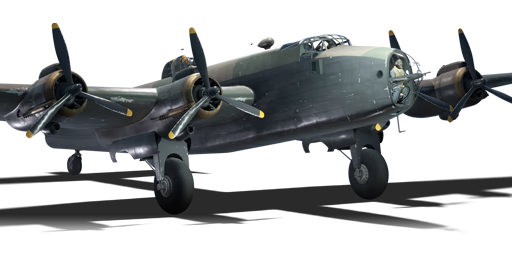



During the mid-1930s, the British Air Ministry issued Specification P.13/36, calling for a twin-engine medium bomber with long range for “worldwide use”. Two designs were submitted: the Avro Manchester and the Handley Page Halifax. Originally, the Halifax was to be a backup design in case the Manchester, powered by a pair of the troubled Rolls-Royce Vulture engines, failed – which it eventually did. The Air Ministry then ordered Handley Page to redesign the Halifax to be powered by four Rolls-Royce Merlin engines instead, in order to fill the gap in the RAF’s bombing fleet. In its new form, the Halifax made its first flight on 25 October 1939 and entered service a year later.
At the outbreak of World War II, the Halifax, along with the Short Stirling, was one of the two main heavy bombers of the RAF, later joined by the Avro Lancaster, a design stemming from the Manchester. Due to prioritisation of the Merlin engines for use on fighters and the more capable Lancaster, a decision was made to switch the engine of the Halifax to the more readily available Bristol Hercules radial engines. Designated Halifax B Mk III, this variant of the Halifax became the main serial production type. In total, 6,178 Halifaxes were built, including 2,091 Mk IIIs, and would serve with the RAF until 1947 and further foreign service until 1961 with the Pakistan Air Force.
The Halifax B Mk IIIa was introduced in Update 1.59 "Flaming Arrows". The first thing that new Halifax pilots will notice is that the plane is surprisingly agile, especially compared to its predecessor, the cumbersome Wellingtons. This will be useful for aiming the bombs, as well as allowing the pilot to get out of sticky situations. With a large payload of nearly 6 tons, the Halifax is more than capable of taking out bases and ground targets. However, the Halifax’s survivability is poor; the airframe and its defensive armaments are very weak, and therefore it is advised to avoid engagements whenever possible.
flaps
flaps
flaps
brake
| Belt | Belt filling | Armor penetration (mm) at a distance: | |||||
|---|---|---|---|---|---|---|---|
| 10 m | 100 m | 500 m | 1000 m | 1500 m | 2000 m | ||
| T/AP/Ball/Ball/I | 13 | 12 | 7 | 3 | 2 | 0 | |
| IT/AP/AP/AP | 13 | 12 | 7 | 3 | 2 | 0 | |
| IT/AP-I/AP-I/AP-I | 13 | 12 | 7 | 3 | 2 | 0 | |
6 × G.P. 500 lb Mk.IV bomb












Flight performance | |
|---|---|
Survivability |
|---|
Weaponry | |
|---|---|